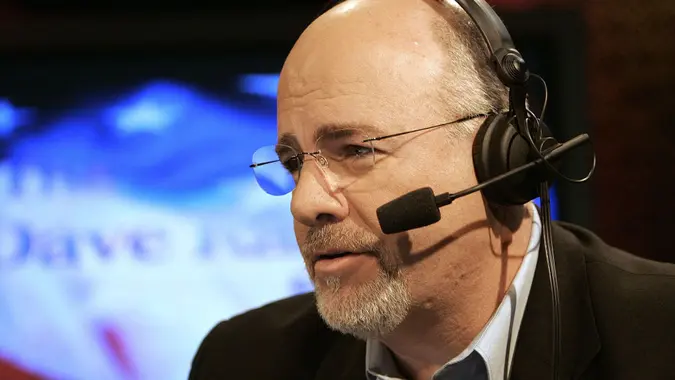10 Major US Cities Where Buying a Home Is Surprisingly Cheap

Commitment to Our Readers
GOBankingRates' editorial team is committed to bringing you unbiased reviews and information. We use data-driven methodologies to evaluate financial products and services - our reviews and ratings are not influenced by advertisers. You can read more about our editorial guidelines and our products and services review methodology.

20 Years
Helping You Live Richer

Reviewed
by Experts

Trusted by
Millions of Readers
The housing market has been difficult to navigate for many Americans — buyers and sellers alike. Between inflation, high cost of living, soaring mortgage rates and housing shortages driving up just how much you’ll need to save for a down payment, people looking to buy a house find themselves financially stumped. With your credit card bills constantly battling your pay stubs, you may have to look for affordable options that are cheap by any standards.
However, GOBankingRates recently conducted a study to determine housing markets that are surprisingly more affordable than expected. The findings were based on everything from average purchasing price to closing costs. Before you can negotiate with the seller on the home inspection, shop around for the best mortgage lender or do a deep dive on your credit report, you first need to land on where it is you want to live.
The difference in the average home value for each city compared to its statewide average home value, as well as the national average home value, were calculated, scored and ranked. Here are 10 cities that are cheaper than you might think.
1. Springfield, Massachusetts
Compared to other cities in the Northeastern region, Springfield is comparatively more affordable. Here are some key takeaways from the GOBankingRates study:
- Average home value: $285,477
- Average monthly mortgage payment: $1,614
- Average total annual cost of living: $43,495
- Home value difference from state average: -$361,075
- Home value difference from the national average: -$74,337
2. Detroit, Michigan
Detroit has seen its fair share of economic turmoil, but in recent years has had a resurgence, and now is a big city that is nice as well as affordable.
- Average home value: $72,499
- Average monthly mortgage payment: $410
- Average total annual cost of living: $32,409
- Home value difference from state average: -$172,450
- Home value difference from the national average: -$287,316
3. Syracuse, New York
New York prices are often associated with the high expenses of Manhattan, however, Syracuse has lower home prices, rental rates and cost of living overall.
- Average home value: $195,674
- Average monthly mortgage payment: $1,106
- Average total annual cost of living: $37,909
- Home value difference from state average: -$266,086
- Home value difference from the national average: -$164,141
4. Baltimore, Maryland
The average monthly cost of living for those living in Baltimore is about $3,133, which considering its location is surprisingly doable for your finances.
- Average home value: $183,336
- Average monthly mortgage payment: $1,036
- Average total annual cost of living: $37,594
- Home value difference from state average: -$249,377
- Home value difference from the national average: -$176,479
5. Visalia, California
Visalia has a population of approximately 141,466 and a reasonable median household income of $75,658. It is fourth on this list thanks to its surprising affordability by California standards.
- Average home value: $386,718
- Average monthly mortgage payment: $2,186
- Average total annual cost of living: $51,249
- Home value difference from state average: -$406,259
- Home value difference from the national average: $26,903
6. Fresno, California
Lower housing costs and sales tax keep Fresno one of the shockingly more affordable places to buy a home in California.
- Average home value: $390,136
- Average monthly mortgage payment: $2,205
- Average total annual cost of living: $50,867
- Home value difference from state average: -$402,840
- Home value difference from the national average: $30,322
7. Bakersfield, California
Most people assume every city in California is out of their price range, and though that can be true for many of the metropolitan areas, Bakersfield offers a little reprieve from some hefty price tags.
- Average home value: $390,409
- Average monthly mortgage payment: $2,207
- Average total annual cost of living: $50,897
- Home value difference from state average: -$402,567
- Home value difference from the national average: $30,594
8. Jackson, Mississippi
In general, the cost of living in Jackson is lower than the national average for housing, utilities, groceries and even dining. This isn’t where relative affordability stops either.
- Average home value: $65,198
- Average monthly mortgage payment: $369
- Average total annual cost of living: $26,680
- Home value difference from state average: -$114,230
- Home value difference from the national average: -$294,617
9. Rochester, New York
Residents of Rochester usually pay about $2,029 a month on expenses on average. These low expenses, including low housing costs, keep it surprisingly affordable.
- Average home value: $220,739
- Average monthly mortgage payment: $1,248
- Average total annual cost of living: $39,323
- Home value difference from state average: -$241,021
- Home value difference from the national average: -$139,076
10. Memphis, Tennessee
Memphis seems to have lower costs in everything from expenses to healthcare when compared to other big cities in Tennessee or even across the Southern region.
- Average home value: $148,628
- Average monthly mortgage payment: $840
- Average total annual cost of living: $33,030
- Home value difference from state average: -$170,829
- Home value difference from the national average: -$211,187
Final Take To GO: Where Is It Affordable To Buy a Home?
The bottom line is that while the bubble has burst on many vacation spots — and pandemic boomtowns in the Sun Belt aren’t as cheap as they used to be — many cities are still affordable. Looking for housing in a cheap U.S. city is a relative real estate concept, and your financial readiness will depend on several factors.
“The key word here is ‘relatively,'” said Chris Motola, special projects editor at National Business Capital. “These locations have built up inventory over the last few years at the same time that demand is beginning to slow, so they’re beginning to cool off a bit. Ironically, right now it’s the big cities — the cities people were fleeing during the pandemic — that are experiencing the biggest affordability problems.”
Motola said that a big metric used in the report was home pricing relative to local incomes. “If a metropolitan statistical area is building housing which locals can’t afford, or not building at all, that’s not a sustainable system,” he said.
“‘Everyone’s moving to Florida’ has been a meme the past few years, and while it’s true that that region is experiencing growing pains and is nowhere near as inexpensive as it used to be, it’s got a long way to go before it reaches California, Boston or New York City levels,” Motola said.
Finally, another surprising finding is that wealthy suburbs and small elite cities are often cheaper than their big-city neighbors when it comes to interest rates on conventional loans, tax returns and relative mortgage payments.
“Another factor is regional price parity, which measures expenses relative to the national average. They’re often cheaper in these suburbs than in the big cities, despite their reputations,” Motola explained.
Methodology: For this study, GOBankingRates analyzed the largest 250 U.S. cities to find the places where buying a home is surprisingly cheap. First GOBankingRates found the largest 250 cities by population as sourced from the U.S. Census American Community Survey. For each location, several factors were found including; total population, population ages 65 and over, total households and household median income all sourced from the U.S. Census American Community Survey. Using this data the percentage of the population ages 65 and over can be calculated. The cost-of-living indexes were sourced from Sperling’s BestPlaces and include the grocery, healthcare, housing, utilities, transportation and miscellaneous cost-of-living indexes. Using the cost-of-living indexes for grocery, healthcare, utilities, transportation and miscellaneous, as well as the national average expenditure costs, as sourced from the Bureau of Labor Statistics Consumer Expenditure Survey for all residents, the average expenditure cost for each location can be calculated. The average single-family home value was sourced from Zillow Home Value Index for September 2024 for each city, each state and the national average. Using the average single-family home value, assuming a 10% down payment and using the most recent national average 30-year fixed mortgage rate, as sourced from the Federal Reserve Economic Data, the average mortgage can be calculated. Using the average mortgage and average expenditure costs, the average total monthly and annual cost of living can be calculated. The difference in the average home value for each city compared to its statewide average home value as well as the national average home value were calculated, scored, and each was weighted at 1.00. The final scores were sorted to show the major U.S. cities where it is surprisingly cheap to buy a home. All data was collected is up to date as of Oct. 31, 2024.
 Written by
Written by  Edited by
Edited by 

























